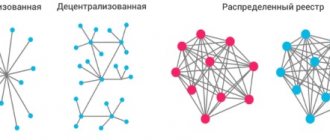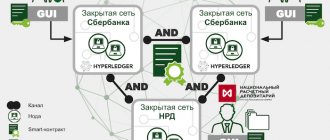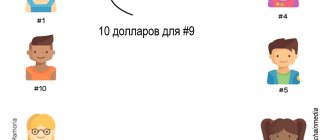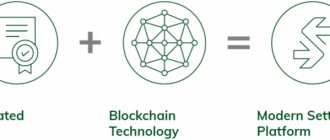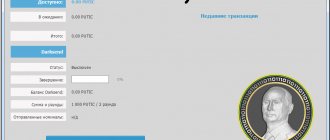ID Membership
Hyperledger Fabric is the basis for decentralized networks where all participants have identities. If you want to implement a decentralized network, you must understand whether your business idea needs to use a chain to comply with data protection regulations. Most use cases for Hyperledger Fabric in the financial and healthcare industries are subject to data protection laws.
Hyperleger Fabric was created by a corporation for corporations, so it is “admitted by ticket.” The network participant must receive a certificate and be identified. Different participants may be granted different rights, restrictions and privileges.
For example, consider a private equity company. To begin with, private equity is traded anonymously on a stock exchange and its investors are usually venture capital firms, private equity firms, or investors. Participants in this network must be certified and identified in order to invest and be able to participate in the blockchain system.
Performance, scalability and trust
Hyperledger Fabric is built on a modular architecture that divides transaction processing into three stages: distributed logical processing and agreement (“chain code”), transaction ordering, and transaction verification and confirmation. This separation provides several benefits: node types require fewer layers of trust and verification, and network decentralization and performance are optimized.
In the Hyperledger Fabric structure, transactions are processed completely differently than in other structures. The focus here is on reducing trust levels and the number of checks a transaction must have. This allows transactions to be completed faster and more efficiently.
To illustrate this, consider the transaction flow in version 1.0 of Hyperledger Fabric, shown in the figure below.
Starting from the left of the picture:
- A transaction proposal is sent by the application to the approving peer.
- The approval rules specify how many and/or what combination of approvals are required to sign an application. Validation executes chain code to simulate a proposal on a network peer, creating a read/write set.
- Approving nodes then send approvals back to the application.
- The application sends transactions and signatures to the ordering service.
- The order service creates a batch or blocks transactions and delivers them to the nodes.
- When a receiving peer receives a batch of transactions, for each transaction it checks to see if the approval policy has been met; checks on the read/write sets detect conflicting transactions.
- If both checks pass, the block is committed to the ledger and state updates for each transaction are reflected in the state database.
Since only signatures and read/write set are sent on the network with the new v1.0 architecture, scalability and performance are optimized. Additionally, since only confirmations and nodes actually see the transaction, fewer layers of trust are required in different parts of the Blockchain system, resulting in greater security.
For example, in the stock market with asset-backed securities or bonds bought and sold, the volume of transactions has increased due to the growing number of participants. To increase the number of transactions in a blockchain system, improved scalability and performance are required, which v1.0 from Hyperledger Fabric partially explains by splitting the chain execution.
Sharing chain execution also allows for dynamic growth in the network. In version 1.0 of Hyperledger Fabric, nodes can be added dynamically and programmatically, rather than statically as in v0.6. For example, suppose a company that manages foreign exchange rates has a new bank to add to the network. With Hyperledger Fabric v1.0, they can do this programmatically, which increases the efficiency of the fabric.
Hyperledger Fabric
Fabric is a blockchain framework that was originally proposed by IBM and DAH (Digital Asset Holdings). It is intended to provide a framework for developing blockchain solutions and is based on a modular architecture where various components, such as a consensus algorithm, can be connected as needed. Smart contracts in Fabric are called chaincode. The Hyperledger Fabric network includes “peers” that execute blockchain code, access ledger data, support transactions, and support application interfaces.
Fabric is designed for projects that require distributed ledger technology (DLT). Supports chaincode in Go (Golang), Java and JavaScript (via Hyperledger Composer, or since version 1.1) and is therefore potentially more flexible than a smart contract language.
Status: active
Access to the information
Due to competition, privacy laws and regulation, organizations are dictating the need for privacy of certain data elements, which can be achieved by separating the data onto a blockchain. Channels supported in Hyperledger Fabric allow data to be transferred only to the parties that need to use it.
For example, many financial services companies express concern about competitors seeing even the number of transactions being processed. Some financial institutions do not consider cryptography a “sufficient” measure to protect their data. Channels help ensure data can be separated, where only those who need to know the data will see the number of transactions and the data itself.
Fabric's decentralized ledger and smart contract platform enable private channels. If you have a large chain network and only want to share data with certain parties, you can create a private channel with only those participants. Moreover, not every transaction may be visible to every network user. Hyperledger Fabric allows for private transactions, something that cannot be done on Ethereum, which promotes transparency. For certain highly regulated industries, such as healthcare, this is clearly a very big benefit.
Smart Contracts: Like Ethereum, Fabric allows the use of smart contracts called “chaincode”. Smart contracts are developed at the highest level.
Not every blockchain needs to be anonymous and open. It all depends on the purpose of its use. Hyperledger Fabric allows all network participants to have known identities. Decentralized blockchains are exactly what financial companies, and even more so the healthcare industry, need.
For example, take the case of a mortgage company using blockchain. Mortgage information cannot be publicly published. The information requires parties to be able to identify themselves online for authentication.
Hyperledger Projects
Hyperledger incubates and promotes a range of business blockchain technologies, frameworks, libraries, interfaces and applications. Hyperledger is currently developing the following projects.
Hyperledger Sawtooth
Hyperledger Sawtooth is a modular blockchain suite developed by Intel that uses a new consensus algorithm called Proof of Elapsed Time (PoeT).
subscribe
Hyperledger Iroha
Hyperledger Iroha is a project by several Japanese companies to create an easy-to-use blockchain platform.
subscribe
Hyperledger Fabric (Hyperledger IBM)
Hyperledger Fabric - This project is led by IBM. Fabric is a pluggable and reproducible implementation of blockchain technology designed as a foundation for developing scalable, permissioned blockchain applications.
subscribe
Hyperledger Burrow
Hyperledger Burrow is a project that is developing a valid smart contract engine based on the Ethereum specification.
subscribe
Hyperledger Composer
Hyperledger Composer is a tool for building blockchain business networks.
Hyperledger Explorer
Hyperledger Explorer is a blockchain module and one of the Hyperledger projects hosted by the Linux Foundation.
Designed to create a user-friendly web application, Hyperledger Explorer can view, call, expand or query blocks, transactions and associated data, network information (name, status, node list), chain codes and transaction families, and any other relevant information stored in the general ledger.
subscribe
Hyperledger Indy
Hyperledger Indy is a set of tools, libraries, and other components for blockchain-based digital identities.
subscribe
Hyperledger Cello
Hyperledger Cello is a blockchain-as-a-service deployment model.
In addition to these projects, Hyperledger has several tool projects aimed at making blockchain access and development easier and more efficient.
subscribe
So, we'll take a closer look at two of the most famous projects: Sawtooth and Fabric .
Both projects were created by large companies - Intel and IBM - and open sourced by Hyperledger. With Hyperledger, companies continue to push their blockchain projects forward while everyone else in the project is invited to contribute.
Network persistence
A decentralized environment provides an orderly record of information for a blockchain application. Each transaction results in a key-value set that is case bound. It can be created, updated or deleted. An immutable trust source for v1.0 is added to the node file system, which also has a built-in LevelDB module.
LevelDB has a default underlying data base and supports key queries, compound key queries, and key range queries. If you need complex, rich queries, CouchDB has you covered and supports the core capabilities of LevelDB by adding full queries, data-rich queries. With additional document database support such as CouchDB, JSON content becomes fully queryable, the data model is compatible with the existing key/value programming model. As a result of all this, application changes are not required when modeling code data as in JSON when using CouchDB.
This JSON format helps minimize the work required to create simple reports and perform auditing functions. For example, in supply chain scenarios, you can use a JSON document style to display specific data for products and transportation objects. You can easily prepare a product report for the different locations and transport facilities that were used to deliver the product to its final destination.
Modular architecture supporting plug-in components
Hyperledger Fabric allows developers to build embedded components into their architecture. For example, you can compress some components as needed and in one of the fastest ways.
This modularity is ensured by its robust architecture, which takes into account the development prospects of new blockchain technology. This is very useful when you want to access a system, such as a custom identity management system, so that users can use the blockchain platform built on top of the Hyperledger Fabric.
Modular Architecture: Fabric has a modular architecture and allows for greater flexibility depending on what you want to use.
The modularity of the Hyperledger Fabric architecture allows network developers to use different component solutions, which is a significant advantage. One of the most sought-after areas of modularity is node identification. Some multi-company networks already have identity management in place and want to reuse what they have rather than rebuild. Other components of the architecture that can be easily connected include consensus or encryption.
Transparent Process: Transactions may be opaque, but the development process is the opposite. “At this point, Hyperledger's core teams were extremely willing to balance the needs to get opportunities with an open and transparent development process,” noted Skuchain founder Zaki Manian.
Protect digital passwords and sensitive data
HSM (Hardware Security Module) support is vital for protecting and managing digital keys for strong authentication. Hyperledger Fabric provides modified and unmodified PKCS11 for key generation, which supports features such as identity management that need more security. For identity management scenarios, HSM improves the protection against tampering of keys and sensitive data.
Hyperledger Channels may be one of the most underrated features. Channels make it possible to separate data. This allows us to protect the data we need to protect.
This capability is very useful when financial companies that intend to implement blockchain express deep data security concerns. We are talking about companies and banks where even very good cryptography is not enough to secure data.
With channels in Hyperledger Fabric, you can provide data that is only needed in partitioned form, or store data that is sensitive to data partitions.
Openchain
Openchain is an open source system for issuing and managing digital assets.
Key features of Openchain include:
- Openchain tokens can be linked to Bitcoin by creating sidechains.
- Smart contract modules.
- Unified API.
- Multi-level control.
- A hierarchical accounting system that allows you to set permissions at any level.
- The ability to have multiple Openchain instances copying each other.
- Consensus mechanism: party consensus.
Useful links:
Openchain official website
Openchain on Github
Community support
The community that shapes and changes the Hyperledger Fabric is very vibrant today.
With the support of huge companies like IBM and Toyota using Hyperledger Fabric in their production, the Hyperledger Fabric community and its support continues to grow at a rapid pace.
Large Enterprise Support: Thanks to tech giants like IBM, Intel and Cisco, Fabric has strong support from enterprise companies. This can provide a high degree of stability, instilling confidence in those who may still be unaware of the future of blockchain. On the other hand, people familiar with blockchain will pay attention to the relatively new and efficient infrastructure.
Microsoft, IBM and Hyperledger formed the IWA alliance to develop tokenization standards
Microsoft, IBM and Hyperledger have formed the InterWork Alliance (IWA), a non-profit organization, to create international standards for tokenized ecosystems.
The leaders of the alliance were Microsoft chief architect Marley Gray and former executive director of the Enterprise Ethereum Alliance Ron Resnick. The organization includes more than 28 companies working in the field of blockchain, finance and technology. These include Microsoft, Chainlink, Hyperledger, IBM, Accenture and NASDAQ.
According to IWA executives, startups developing tokenized ecosystems are focused on their own customized solutions and promoting their platforms. However, the creation of international standards that clearly define the concept of tokens and the operation of smart contracts will contribute to the collective implementation of distributed business models.
The InterWork Alliance intends to develop three different systems of international standards. The Token Taxonomy Framework will provide a common language and set of tools through which multiple parties can agree on the terms of use of a token, as well as define the principles of its operation. The InterWork Framework will help draft multi-party contracts using the standard clauses provided by the IWA. Thanks to the Analytics Framework, firms will analyze multilateral contracts using artificial intelligence services and market data reporting.
On topic... Ethereum's short-term trend has begun to show signs of weakness
Gray noted that token standards will ensure that decentralized applications can effectively interoperate with various blockchains, and Hyperledger CEO Brian Behlendorf said that standards play a critical role in the development of any technology.
Creating distributed applications and tokenized services requires a certain structure that will allow firms to interact at the business level, regardless of the technologies used. IBM WW Digital Asset Labs Director Nitin Gaur emphasized that such a platform-neutral alliance would change the “tokenization landscape” and the entire cryptocurrency industry.
Standards for blockchain and cryptocurrencies are being developed by other organizations. Last summer, the Institute of Certified Public Accountants (AICPA) proposed a new set of standards for evaluating audit data based on blockchain.
On topic... A new leader will emerge in the North American mining market
Hyperledger Fabric is still a new infrastructure
Hyperledger Fabric is Hyperledger's most mature technology project, but Hyperledger itself is far from being that. In fact, Fabric 1.0 was only released in July 2020.
Brian Bechlendorf, Hyperledger's chief executive, disagrees with the project's lack of proven use cases, limited understanding of the technology and its potential, limited talent and skills gaps in IT and business. As he said: “If this were true, we wouldn't be hearing from enterprises that Hyperledger Fabric is no longer just a project, but something they need.
The creators of the Hyperledger Fabric acknowledge that much remains to be done. Here's what Chris Ferris said about this: “Of course, this is not the end. There is still a lot of work to do. We need more collaboration and new innovation across all Hyperledger projects." Ferris is the Chair of the Hyperledger Technical Leadership Committee and the CTO of Open Technology at IBM.
History and team
The Linux Foundation announced the creation of the Hyperledger project in December 2020.
The board and founding team were finalized in March 2020. Brian Behlendorf became executive director.
The leadership council consists of twenty-one members and is chaired by Blythe Masters, (CEO of Digital Asset).
The Technical Steering Committee consists of twelve members and is chaired by Christopher Ferris, Chief Technology Officer of Open Technology at IBM.
Currently, Hyperledger participants include a large number of reputable companies from around the world, many of which occupy leading positions in their industries.
These include technology giants - Airbus and Daimler, IT organizations - IBM, Huawei, Fujitsu, Nokia, Intel, SAP, and Samsung, financial and economic institutions - Deutsche Börse, American Express, JP
Morgan, BBVA, BNP Paribas and Well Fargo, as well as blockchain startups - Blockstream, Netki, Consensys and much more.
go

